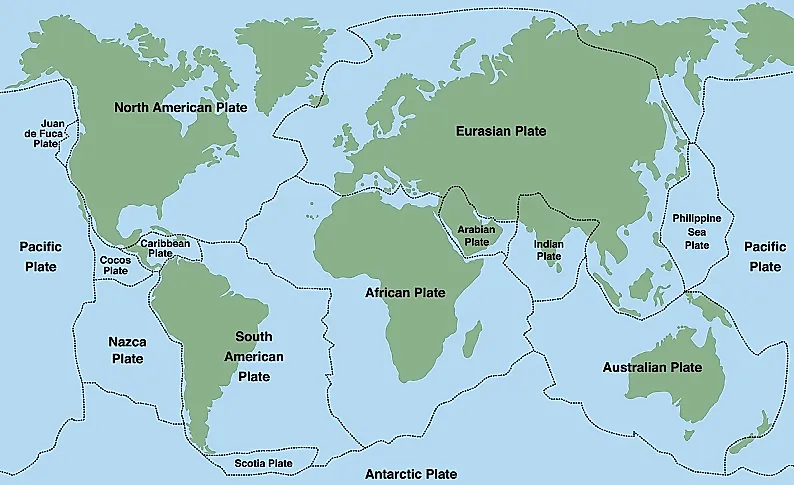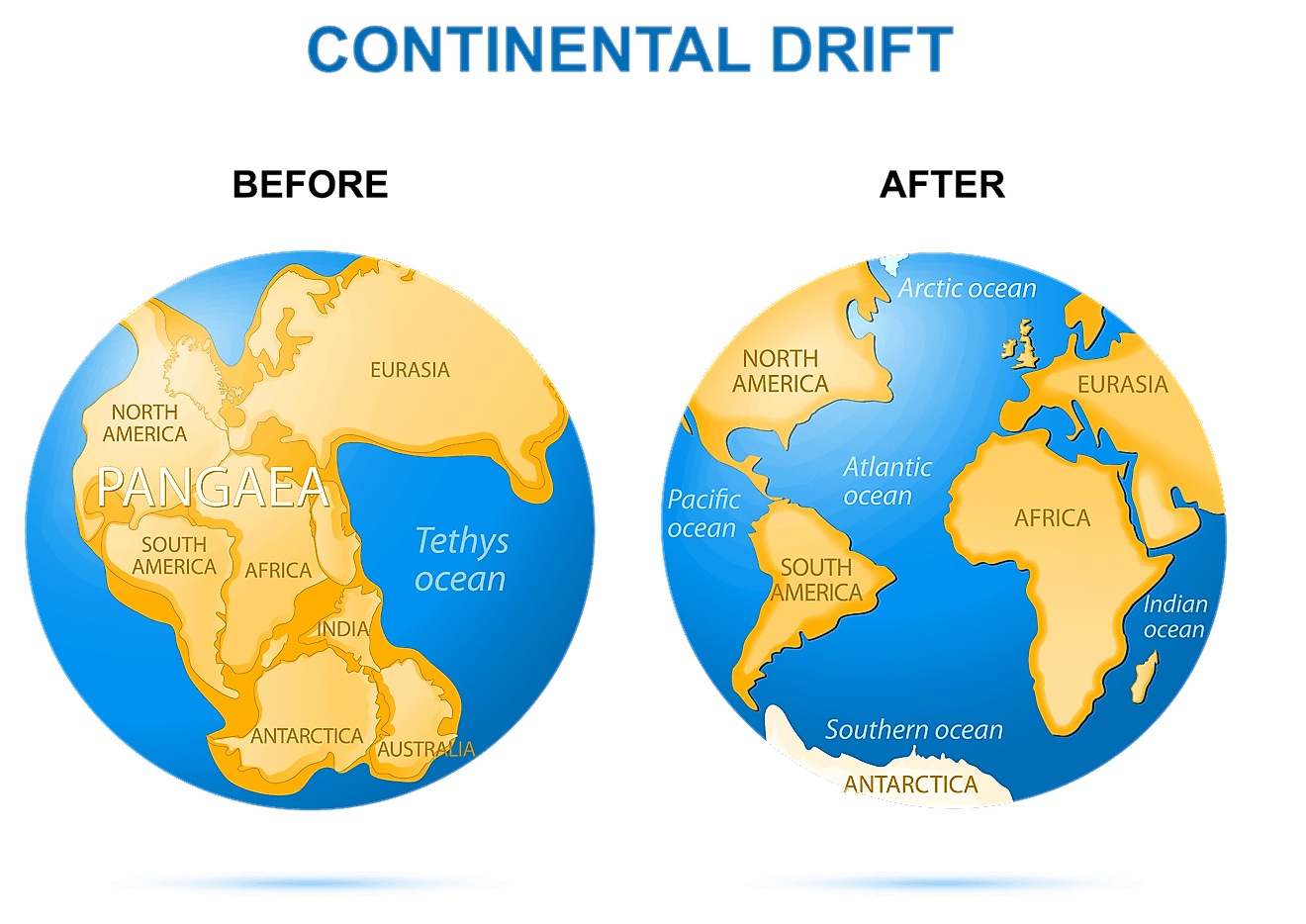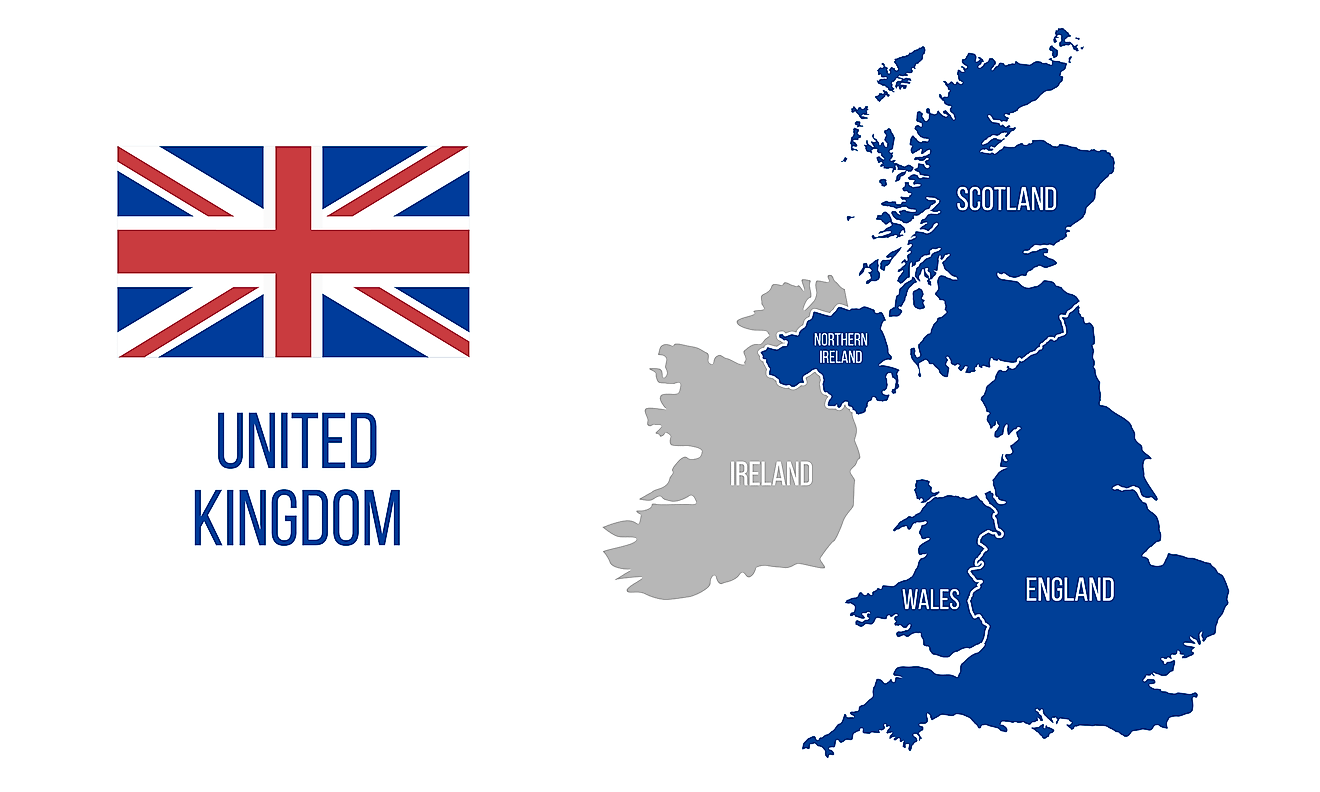
Glossary Of Water Terminology
Water is a transparent, inorganic, odorless, and almost colorless substance existing in liquid, solid, or gaseous states, and composed of two chemical elements; oxygen and hydrogen. It contains two hydrogens and one oxygen atom and is represented by the chemical formula H2O. This substance is liquid at room temperature, solid at freezing point, and gaseous at 100 degrees Celsius. Water can dissolve several other substances and is essential for all life forms even though it contains no organic nutrient nor adds any calories to the body.
Water is the Earth’s most abundant chemical substance and the main component of the hydrosphere. About 71% of the Earth’s surface is covered by water in the form of oceans, seas, lakes, rivers, and streams. Solid water exists in glacier and ice caps, while a small amount also occurs as groundwater. In the atmosphere, water exists as clouds, vapor, and precipitation. When water on the Earth’s surface is heated, it evaporates into the atmosphere, where it condenses and falls to the ground again, finding its way to the sea or ocean through surface runoff. This continuous water movement is known as the hydrological cycle.
Water is one of the most studied chemical substances because of its benefits and influence on other substances. As such, numerous terms have been used to describe this important substance, including its nature, processes, interaction, influence, and other related use. Some of these terms also describe its physical and chemical properties, including the associated characteristics and other substances and organisms linked to it. Below is a glossary of water-related terms one is likely to come across.
A
- acid: a substance that has a pH value between 0 and 7
- acid deposition ("acid rain"): - water that falls to or condenses on the Earth's surface as rain, drizzle, snow, sleet, hail, dew, frost, or fog with a pH of less than 5.6
- acre-foot: the amount of water needed to cover one acre of land one foot deep; about 326,000 gallons
- adhesion: the attraction between molecules that causes matter to cling to or stick to other matter
- adjudication: a court determination of water rights for a groundwater basin or a stream; adjudication sets priorities during shortages
- aeration: the addition of air to water or to the pores in soil
- aesthetic: sensitive to beauty
- alkaline: the quality of being bitter due to alkaline content (pH is greater than 7)
- alluvial: sediment deposited by flowing water, such as in a riverbed
- alum: aluminum sulfate: a chemical, which is mixed into water to cause particles in the water to clump together so they can be removed
- anadramous: any fish which spends a portion of its life cycle in freshwater and a portion in the sea
- aquifer: an underground layer of rock, sediment or soil that is filled or saturated with water
- aquifer system: a heterogeneous body of introduced permeable and less permeable material that acts as a water-yielding hydraulic unit of regional extent
- aqueduct: man-made canal or pipeline used to transport water
B
- bacteria - any of a number of one-celled organisms, some of which cause disease
- base - a substance that has a pH value between 7 and 14
- basin - a groundwater reservoir defined by the overlying land surface and underlying aquifers that contain water stored in the reservoir
- benefit - an advantage to be gained in a trade-off
- benefit/cost analysis - a process of evaluating the advantages and disadvantages of a proposed purchase or project
- BMPs (Best Management Practices) - structural or management practices which are implemented to reduce pollution (e.g., using a permeable material for parking lots to reduce urban runoff)
- boiler scale - mineral deposits from water, such as those found inside pipes or teakettles
- bond - a promise to repay money borrowed, plus interest, over a specified period of time
- bond issue - a means of raising large amounts of money for major projects by selling bonds
- brackish - water containing too much salt to be useful to people but less salt than ocean water
- by-products - something produced in addition to the principal product
C
- capillarity - the process by which water rises through rock, sediment or soil caused by the cohesion between water molecules and an adhesion between water and other materials that "pulls" the water upward
- capital cost - all the implements, equipment, machinery and inventory used in the production of goods and services
- cesspool - a covered hole or pit for receiving sewage
- chloramination - the treatment of a substance, such as drinking water, with chlorine and ammonia (chloramines) in order to kill disease-causing organisms
- chlorination - the treatment of a substance, such as drinking water, with chlorine in order to kill disease-causing organisms
- cloud - a mass of suspended water droplets and/or ice crystals in the atmosphere
- cloud droplets - the tiny liquid pieces of water that many clouds are made of. When cloud droplets join together and become heavy enough they form raindrops.
- coagulation - the process, such as in treatment of drinking water, by which dirt and other suspended particles become chemically "stuck together" so they can be removed from water
- cohesion - the ability of a substance to stick to itself and pull itself together
- coliform - a group of bacteria used as indicators of microbiological contamination
- colloidal suspension - a method of sediment transport in which water turbulence (movement) supports the weight of the sediment particles, thereby keeping them from settling out or being deposited
- condensation - water vapor changing back into liquid
- condensation surfaces - small particles of matter, such as dust and salt suspended in the atmosphere, which aid the condensation of water vapor in forming clouds
- confined aquifer - an aquifer that is bound above and below by dense layers of rock and contains water under pressure
- conjunctive use - the planned use of groundwater in conjunction with surface water to optimize total water resources
- conservation - saving; not wasting; using water wisely
- constituents - parts of a whole; components
- consumer - one who consumes or uses economic goods or services
- contaminate - to make unfit for use; to pollute
- contractor - a water agency that signs a contract to acquire given amounts of water from another agency, usually under specified conditions
- contour plowing - plowing done in accordance with the natural outline or shape of the land by keeping the furrows or ditches at the same elevation as much as possible to reduce runoff and erosion
- cost - the outlay or expenditure (as of money, effort or sacrifice) made to achieve an object or advantage
- cost-effective - able at least to pay for itself or make a profit
- county water authority - a public water district serving a county-wide area
- cubic foot of water - the amount of water needed to fill a cube that is one foot on all sides; about 7.5 gallons
D
- dam - a structure built to hold back a flow of water
- debt service - the repayment of borrowed money, plus interest
- deficit - the amount by which a sum of money falls short of an expected amount
- delta - fan-shaped area at the mouth of a river (where seas are relatively calm)
- demand - the quantity of goods or services that consumers are willing and able to buy at a given price
- deposition - the process of dropping or getting rid of sediments by an erosional agent such as a river or glacier; also called sedimentation
- desalination - the process of removing salt from seawater or brackish water
- dew - moisture in the air that condenses on solid surfaces when the air is saturated with water vapor
- dew point - the temperature at which the air becomes saturated with water vapor
- discharge - the amount of water flowing past a location in a stream/river in a certain amount of time - usually expressed in liters per second or gallons per minute
- disinfect - to destroy harmful microorganisms
- dissolve - to enter into a solution
- divert - to direct a flow away from its natural course
- divide - a ridge or high area of land that separates one drainage basin from another
- drainage basin - all of the area drained by a river system
- drought - a prolonged period of below-average precipitation
E
- economic benefit - a gain that can be measured in dollars
- economic cost - a cost involved in a trade-off that requires spending money
- ecosystem - an interacting network of groups of organisms together with their non-living or physical environment
- efficiency - effective operation as measured by a comparison of production with cost
- endangered species - a species of animal or plant threatened with extinction
- environment - the surroundings that affect the growth and development of an organism
- environmental impacts - factors that affect organisms and the surroundings of organisms
- Environmental Impact Report (EIR) - a state-mandated written summary of the positive and negative effects on the environment caused by the construction and operation of a project
- erosion - the processes (including soil erosion) of picking up sediments, moving sediments, shaping sediments, and depositing sediments by various agents; erosional agents include streams, glaciers, wind and gravity
- Escherichia coli (E. coli) - a common bacterium found in fecal matter; member of the coliform group
- evaporation - water changing into vapor and rising into the air
- exchange - the act of trading goods or services for those produced by people who are located elsewhere
- expense - something spent (such as money, time or effort) to secure a benefit or bring about a result
F
- factors of production - the resource inputs involved in the production of goods and services: for example, labor, land and capital
- feces - waste excreted from the bowels of humans and animals
- filtration - passing water through coal, sand and gravel to remove particles
- filtration plant - place where water is cleaned and made safe to drink
- financing cost - the fees charged by financial specialists and the interest charged on money borrowed to pay for a project
- fish ladder - a device to help fish swim around a dam
- fishery - the aquatic region in which a certain species of fish lives
- floc - clumps of impurities removed from water during the purification process; formed when alum is added to impure water
- flocculation - a step in water filtration in which alum is added to cause particles to clump together
- floodplain - area formed by fine sediments spreading out in the drainage basin on either side of the channel of a river as a result of the river's fluctuating water volume and velocity
- fog - clouds that form at the Earth's surface
- frost - the ice that forms on surfaces as a result of the temperature of that surface reaching freezing before the air becomes saturated with water
G
- gallon - a unit of measure equal to four quarts or 128 fluid ounces
- geyser - a thermal spring that erupts intermittently and to different heights above the surface of the Earth; eruptions occur when water deep in the spring is heated enough to turn into steam, which forces the liquid water above it out into the air
- glacial striations - lines carved into rock by overriding ice, showing the direction of glacial movement
- glacier - a large mass of ice formed on land by the compacting and recrystallization of snow; glaciers survive from year to year, and creep downslope or outward due to the stress of their own weight
- groundwater - water under ground, such as in wells, springs and aquifers
- gullying - small-scale stream erosion
H
- habitat - the place or type of site where a plant or animal naturally or normally lives and grows
- hail - transparent or layered (ice and snow) balls or irregular lumps of solid water
- hardness - a characteristic of water determined by the levels of calcium and magnesium
- hatcheries - a place for hatching fish eggs
- humus - decomposed bits of plant and animal matter in the soil
- hydroelectric plant - a power plant that produces electricity from the power of rushing water turning turbine-generators
- hydrologic cycle - the natural recycling process powered by the sun that causes water to evaporate into the atmosphere, condense and return to earth as precipitation
- hydrology - the scientific study of the behavior of water in the atmosphere, on the Earth's surface and underground
I
- iceberg - large chunks of ice that break off of coastal glaciers and float away
- igneous - rock solidified from a molten state, such as lava and obsidian
- impermeable - having a texture that does not permit water to move through quickly
- imported water - water brought into an area from a distant source, such as from one part of a state to another via an aqueduct
- impound - to confine in an enclosure, such as impounding water in a reservoir
- impurity - any component which causes another substance to become contaminated
- indicator - a device or substance used to show the presence of another substance
- infiltration (also called percolation) - the entrance or flow of water into the soil, sediment or rocks of the Earth's surface
- inorganic - chemicals not containing the element carbon
- interest - payments made to an investor for the use of borrowed money
- intrusion - the entrance of an unwanted element, such as saltwater, into freshwater supplies
- inundation - covering over or flooding, such as flood waters covering a valley
- irrigation - supplying water to agriculture by artificial means, such as pumping water onto crops in an area where rainfall is insufficient
L
- labor - the mental and/or physical talents contributed by people for the production of goods or services
- lactose - a white organic substance made from milk that is used in infant foods, bakery products and confections; also used as a "culture" in laboratories
- landfill - an open area where trash is buried
- leach - to remove components from the soil by the action of water trickling through
- levees - dikes or other embankments which contain water within a given course
- local runoff - water running off a local area, such as rainfall draining into a nearby creek
M
- manufacturer - one who makes a product
- marginal land - land which, in its natural state, is not well suited for a particular purpose, such as raising crops
- member agency - one of 27 member public water providers associated with the Metropolitan Water District of Southern California, from which it purchases water and o whose board it is represented
- microorganism - an organism of microscopic size, such as bacterium
- migratory - moving from one area to another on a seasonal basis
- mitigation - a way in which an agency may offset negative environmental impacts of a project or make the impacts less serious
- mulch - material spread on the ground to reduce soil erosion and evaporation of water; include hay, plastic sheeting and wood chips
- municipal water district - a public water provider, owned and operated by more than one city government, which supplies water to its member cities
N
- natural environment - all living and nonliving things that occur naturally on the earth; not made
- nomad - a wanderer, a person or animal which moves from place to place
- non-economic benefit - a gain resulting from a trade-off that cannot be measured in dollars
- nonpoint source pollution - pollution which comes from diffuse sources such as urban and agricultural runoff
- NPDES (National Pollutant Discharge Elimination System) permits - permits issued to point sources for the purpose of limiting pollution in discharges
O
- organic - any chemical containing the element carbon
- overdraft - condition that occurs in a groundwater basin when pumping exceeds the amount of replenishment over a period of years
- ozone - a gas that is bubbled through water to kill germs
P
- pathogenic - capable of causing disease
- percolation - water soaking into the ground
- perennial yield - maximum quantity of water that can be annually withdrawn from a groundwater basin over a long period of time (during which water supply conditions approximate average conditions) without developing an overdraft condition
- permeability - the capacity or ability of a porous rock, sediment, or soil to allow the movement of water through its pores
- PEROXONE - a combination of peroxide and ozone used to kill germs in water
- pH - a relative scale of how acidic or basic (alkaline) a material is; the scale goes from 0 to 14; 7 is neutral, acids have pH values less than 7 and bases have pH values higher than 7
- photosynthesis - process in which chlorophyll-containing cells convert light into chemical energy, forming organic compounds from inorganic compounds
- pipeline - carries water underground to homes and businesses
- plankton - minute plants and animals floating in bodies of water; often a major source of nutrition for larger aquatic life forms
- pollutant - any inorganic or organic substance that contaminates air, water or soil
- point source pollution - pollution which comes from a well-defined source such as sewage treatment plant effluent from industrial dischargers. . .for purposes of the Clean Water Act, agricultural return flows are not regulated as a point source
- pore spaces - the open areas, or spaces, in soil, sediments, and rocks that are filled by air or water
- porosity - a measure of the ratio of open space within a rock or soil to its total volume
- POTWs (Public Owned Treatment Works) - sewage treatment plants
- precipitation - water falling toward the Earth's surface in the form of rain, drizzle, hail, sleet, or snow
- pumping lift - distance water must be lifted in a well from the pumping level to the ground surface
- pumping plant - facility that lifts water up and over hills
R
- reclaimed water - wastewater that has been cleaned so that it can be reused for most purposes except drinking
- recharge - increases in groundwater storage from precipitation, infiltration from streams, or human activity (artificial recharge), such as putting surface water into spreading basins
- relative humidity - the ratio of the amount of moisture in the air to the maximum amount of moisture the air could hold under the same conditions; usually expressed as a percentage
- reservoir - a pond or lake where water is collected and stored until it is needed
- rills - small grooves, furrows, or channels in soil made by water flowing down over its surface; also another name for a stream - usually a small stream
- runoff - liquid water that travels over the surface of the Earth, moving downward due to the law of gravity; runoff is one way in which water that falls as precipitation returns to the ocean
S
- saltation - the movement of sand or fine sediment by short jumps above a streambed under the influence of a water current too weak to keep it permanently suspended in the moving water
- salinity - saltiness
- saturation - the condition of being filled to capacity
- sea ice - solid water that forms when ocean or sea water freezes
- section 319 grants - grants for nonpoint source pollution programs
- sediments - fragments of material produced by weathering and erosion of rocks
- sedimentation - the process of particles in water settling to the bottom of a tank
- selenium - a non-metallic element in the same chemical group as sulfur; its compounds are harmful to wildlife or people when found above certain levels in water
- septic tank - a sewage disposal tank in which bacteria decompose waste
- sheet wash - a flow of rainwater that covers the entire ground surface with a thin film and is not concentrated into streams
- sleet - precipitation that consists of clear pellets of ice; sleet is formed when raindrops fall through a layer of cold air and freeze
- snow - precipitation that consists of frozen flakes formed when water vapor accumulates on ice crystals, going directly to the ice phase
- soil - sediment on or near the Earth's surface that is formed by the chemical and physical weathering of rocks as well as the decay of living matter
- soil subsidence - the lowering of the normal level of the ground, usually due to over pumping of water or oil from wells
- spawn - to produce or deposit eggs, as those of aquatic animals
- spring - groundwater seeping or flowing out of the Earth's surface; springs occur where the water table reaches the surface
- SRF (State Revolving Fund) - funding, in the form of loans, available for the control of point and nonpoint source pollution
- steam - water vapor that rises from boiling water
- stream - the type of runoff where water flows in a channel downhill because of the pull of gravity
- sublimation - formation of a gas from a solid, or vice-versa, without passing through the liquid phase
- subsidence - sinking of the land surface due to a number of factors, of which groundwater extraction is one
- subsurface water - all water - solid, liquid or gaseous - that occurs beneath the Earth's surface; located below the water table in the zone of saturation
- surface runoff - water flowing along the ground into rivers, lakes, and oceans
- surface water - all water, fresh and salty, on the Earth's surface
- suspended - the state of floating in water rather than being dissolved in it
- suspension - a method of sediment transport in which air or water turbulence supports the weight of the sediment particles, thereby keeping them from settling out or being deposited
T
- thermal spring - a warm or hot water spring; many occur in regions of recent volcanic activity and are fed by water heated by contact with hot rocks far below Earth's surface
- till - a deposit of sediment formed under a glacier, consisting of an unlayered mixture of clay, silt, sand, and gravel ranging widely in size and shape
- topsoil - the top layer of soil; topsoil can grow better crops partly because it has more organic matter (humus), allowing it to hold more water than lower soil layers
- toxic - poisonous; harmful to living organisms
- transpiration - evaporation of water through the leaves of plants
- trihalomethanes, trichloroethylene, perchloroethylene - organic compounds which may be harmful to health at certain levels in drinking water
- turbidity - the state of having sediment or foreign particles suspended or stirred up in water
U
- unconfined aquifer - an aquifer that discharges and recharges with an upper surface that is the water table
- unsaturated zone - the subsurface zone, usually starting at the land surface and ending at the water table, that includes both water and air in spaces between rocks
- usable storage capacity - the quantity of groundwater of acceptable quality that can be economically withdrawn from storage
W
- wastewater - water that has waste material in it
- wastewater treatment - cleaning wastewater
- water cycle - the movement of water from the air to and below the Earth's surface and back into the air
- water quality - the condition of water as it relates to impurities
- water reclamation - treating wastewater so that it can be used again
- water table - (1) the boundary in the ground between where the ground is saturated with water (zone of saturation) and where the ground is filled with water and air (zone of aeration); (2) the upper surface of the saturated zone that determines the water level in a well in an unconfined aquifer
- water vapor - the gaseous state of water
- watershed - a geographical portion of the Earth's surface from which water drains or runs off to a single place like a river; also called a drainage area
- well - a hole or shaft drilled into the earth to get water or other underground substances
X
- xeriscape - landscaping that doesn't require a lot of water
Z
- zanja - Spanish word for ditch
- zone of aeration - the portion of the ground from the Earth's surface down to the water table - the zone of aeration is not saturated with water because its pores are filled partly by air and partly by water
- zone of saturation - the portion of the ground below the water table where all the pores in rock, sediment, and soil are filled with water











